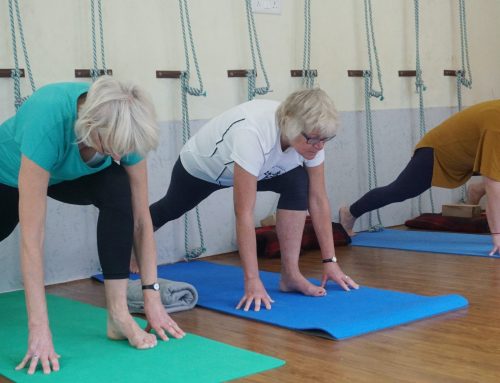When you plan your physical fitness program to aid in your weight loss, you need to consider FIT with these three important components:

How often will you do the exercise?

How hard will the exercise be?

How much time will you devote to each exercise component?
Recommendations
Below are recommendations from the American College of Sports Medicine:
Cardio (Aerobic) Exercise
F (frequency): Three to five times per week.
I (intensity): 60-85% of your maximum heart rate (HR*), depending on your level of fitness.
T (time): Start with two 10 minute sessions or one 20 minute session of continuous activity. Work up to 60 continuous minutes over time.
* HR = Heart Rate. For more information on monitoring your heart rate, consult with your provider or ask them for the Exercise Module entitled Determining Your Heart Rate.
FIT Tips
Get familiar with your HR Zones**. If you don’t have a HRmonitor, aim for being able to have a short, light conversation but not be able whistle or sing or while exercising. If you are taking certain high blood pressure medications, your HR will be limited by the medicine. Ask your doctor if this is the case and use the whistle/sing test to estimate your intensity. (Note: Consult your doctor before you do Zone 4 exercise.)
** This refers to different Heart Rate Zones for exercise. For more information on monitoring your heart rate and heart rate zones, consult with your provider or ask them for the Exercise Module entitled Determining Your Heart Rate.
Flexibility
F: Two to three times per week.
I: Four repetitions per muscle group in a slow, controlled and gentle fashion.
T: Each stretch should be held for 10-30 seconds.
Strength Training
F: Two to three days per week is optimal.
I: Pick a weight you can comfortably lift for 15 repetitions (reps). As you get stronger, you can increase the weight and do fewer repetitions. The last few reps will be harder than the first few, but you should be able to complete them with good form.
T: Target your major muscle groups (chest, back, shoulders,thighs, and arms). Work up to two to four sets of eight to 15 reps for each muscle group.
FIT Tips
No bouncing. Avoid stretching to your pain threshold. If your muscles feel very tight, stretch for only 10 seconds. Repeat this stretch several times as opposed to holding for 30 seconds straight. When you inhale, imagine sending oxygen into a tight area. As you exhale imagine the area relaxing. Resistance Stretching can also help you target an overly tight area.
FIT Tips
Only pick a weight that you can use good form for every rep. Never drop or allow your weights to slam down. If you have neck, shoulder, knee, hip or back problems, seek the advice of a Physical Therapist or Certified Personal Trainer to avoid aggravating your pain or causing further injuries. Your goal is muscular balance.
Coordination / Stability Training
F: Two to five days per week; as part of your cool down or on its own.
I: After you are comfortable standing on one leg, then do it with your arms crossed. When that is easy, add arms crossed with your eyes closed.
T: Begin by standing on one leg at a time (lifting one foot off the floor a few inches) for 10 seconds. After that is easy, slowly build to 30 seconds each leg.
FIT Tips
Other ways to improve your stability using FIT are:
- Join a yoga class (don’t worry about keeping up with your neighbors and make sure the instructor gives you feedback about your form).
- Sit on a Physioball while exercising or at your desk. If you’re under 5’6”, get the 55 cm size. If you’re over 6 feet, get the 75 cm size. If you’re between, use the 65 cm size.
- Stand on a BOSU board while exercising.
- Some days you will be more stable than others — don’t get discouraged.







Leave A Comment